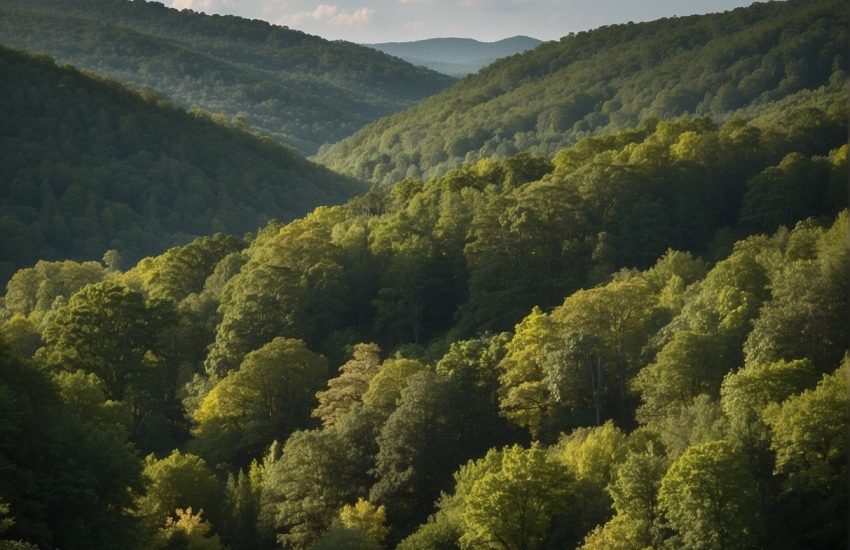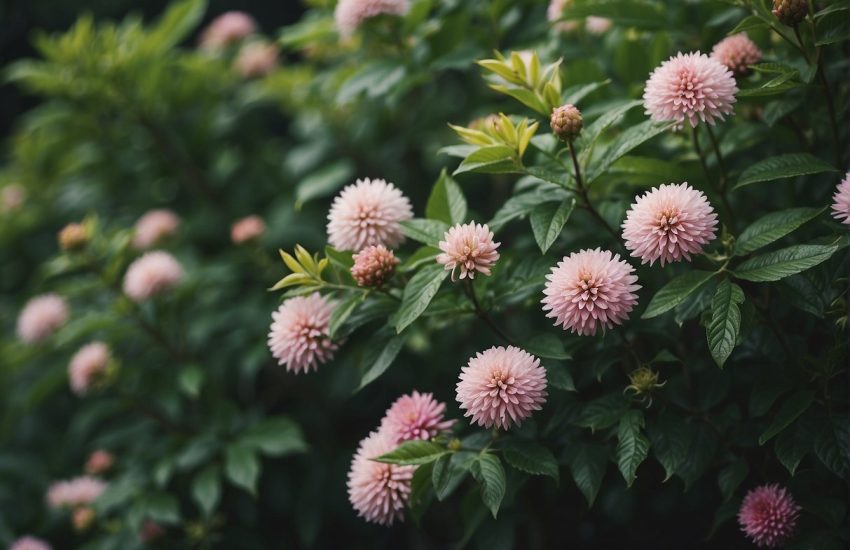The Best Texas Native Plants for Landscaping
If you want to create a beautiful landscape with minimal maintenance, choosing native plants is crucial. And if you live in Texas, you’ll be happy to hear that there’s no shortage of hardy yet beautiful plants for your lawn or garden. When you choose native plants like the ones described below, you aren’t just beautifying your outdoor space. You’re also helping to support the local ecosystem. And whether you’re a veteran landscaper or just picking out a few plants for your yard, we hope you’ll get some inspiration from this list!
The Best Texas Native Trees for Landscaping
Eastern Redbud
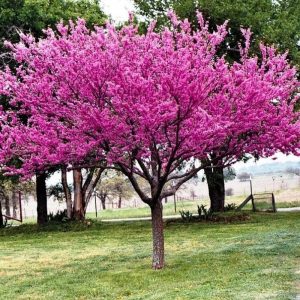
The eastern redbud (Cercis canadensis) can be either a tree or a shrub. It can grow up to 30 feet tall. It’s a tree that can add some real visual interest to any garden; its reddish-purple flowers form a sharp contrast against the near-black branches. And since flowers appear before the leaves, the redbud can add a real splash of color to any garden.
In autumn, the redbud’s leaves will often turn to a fiery red-orange. And since this tree is such a popular landscape plant, there are many different cultivars to choose from.
Live Oak
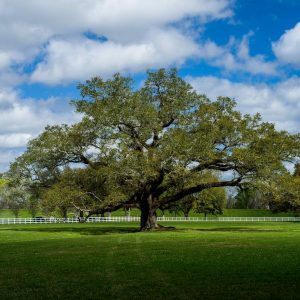
There are several species of live oak, though they all belong to the Quercus genus. The name comes from the fact that the live oak is an evergreen, so it appears to be alive throughout the winter. If you choose to plant live oaks, you’re in good company: this is the most commonly planted native tree in Texas!
Live oaks can grow to be incredibly large, so it’s important to take their size into account when planting them. Over time, they can grow to be 40 feet or taller. But the real size comes from the span of their branches; some live oaks can grow to be 75 feet wide!
Black Cherry
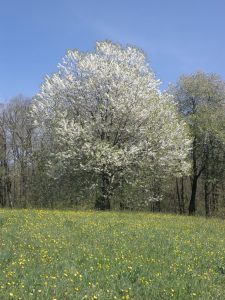
If you’re looking for an appropriate lawn tree but are worried about a tree that could grow too large, the black cherry (Prunus serotina) may be worth looking into. While the black cherry tree grows quickly, it rarely gets taller than 50 feet. It’s also a fruiting tree, so you get the benefit of edible cherries in the fall. The leaves also turn yellow in fall, so your lawn will have a beautiful centerpiece!
However, this tree tends to do better in more moist soil that drains well (like limestone-rich soil) and is also more alkaline. If you’re considering planting one, it’s a good idea to test your soil to make sure it would provide an optimal growing environment.
Spanish Oak
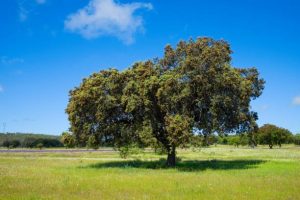
The Spanish oak (Quercus coccinea, Quercus falcata, or Quercus rubra) is also called the southern red oak. It’s a long-lived tree that can live 100 years or more in the right environment. But if you’re planning on planting one, it’s good to know that the Spanish oak isn’t able to retain a whole lot of water. So to make sure the tree can access enough water to thrive, try to plant it somewhere where it isn’t surrounded by other trees.
The Spanish oak is a tree with plenty of environmental benefits. It produces acorns that feed a variety of wildlife. And like many oaks, this one’s leaves turn a beautiful medley of red and yellow in autumn.
Bald Cypress

If you’re looking for a hardy tree that will grow well in just about any type of soil, the bald cypress (Taxodium distichum) is an excellent choice. It has fine, lace-like needles that turn a rich, distinctive red in the colder months.
This conifer is a popular landscape tree, partially because it requires so little maintenance. It naturally forms an attractive triangular shape, and the only real maintenance needed is the removal of any dead branches. However, it prefers acidic soil. If your land’s soil is mostly alkaline, adding peat moss to the soil is often all the bald cypress needs.
Ashe Juniper
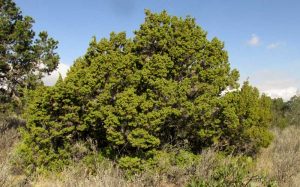
Some landowners consider the ashe juniper (Juniperus ashei) to be a weed. However, it’s a hardy shade tree that makes a stately addition to any landscape. This tree can be found in large numbers in central Texas, though it grows well all over the state. It does especially well in rocky soil.
The ashe juniper will grow to be up to about 50 feet tall. Its “cones” come in the form of small, bluish berries. As a result, it is sometimes called the “blueberry juniper.”
Southern Sugar Maple
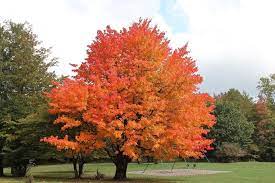
If you like the look of maple trees, the southern sugar maple (Acer floridanum) is one that grows especially well in Texas. It’s a great choice of medium lawn tree, and it’s also more heat-resistant than many maple varieties. And since its branches reach outward, it offers a decent amount of shade.
This low-maintenance tree is a good landscape voice, as it does well in a range of soil types. It prefers mildly acidic soil, though it will even do well in soil that is slightly alkaline.
The Best Texas Native Shrubs for Landscaping
Esperanza
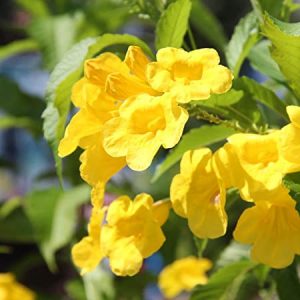
You might sometimes hear this shrub (Tecoma stans) called “yellow bells.” It’s a descriptive name, as the bright bell-like flowers gather in cheerful clusters. Thanks to the splash of color it can add to any lawn or garden, it’s clear to see why it’s such a popular plant for landscaping!
Even in you live in one of the hotter, drier parts of the state, esperanza is a good choice; it’s highly resistant to drought. And like many shrubs, it usually grows to about 3-6 feet tall. It’s a great landscape plant if you want something larger than most flowers or grasses but not something as large as a tree.
Cenizo
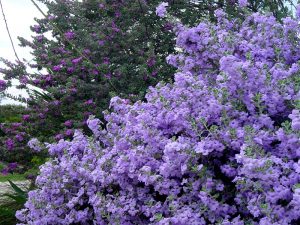
Cenizo (Leucophyllum frutescens) is often called “Texas sage.” It’s not a true sage plant, but its silvery leaves make it easy to mistake for one. But the best feature of this garden shrub is its ability to bloom all year, even in winter. Depending on the individual plant, its small but vibrant flowers can be lavender, medium purple, violet, or even pink.
The cenizo plant usually will grow from 2-8 feet high. But to avoid it becoming unkempt, make sure you periodically trim extra-long branches.
Agarita
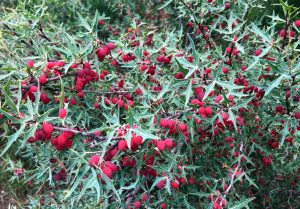
If you want a shrub that will add bursts of yellow, red, and silver-green, the agarita (Mahonia trifoliolata) is a fantastic choice. It’s a bit prickly, though not overly so, and is a very common sight in Hill Country.
This plant has silvery, spine-like leaves that stay green all year. In spring, it’s covered in small yellow flowers. And in summer, it grows red berries.
Flame Acanthus
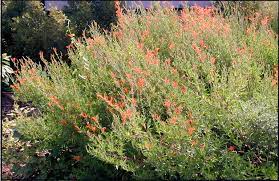
This plant (Anisacanthus quadrifidus var. wrightii) is another shrub native to the beautiful Hill Country. Its flame-like red flowers attract both hummingbirds and butterflies, so it’s a great choice for landscaping if you enjoy watching wildlife! Its distinctive flowers are shaped like narrow cones, are bright red, and point upward at the tops of the branches.
If you don’t have much of a green thumb but want to still include some beautiful plants in your lawn or garden, the flame acanthus is ideal. It resists heat and drought and seems to grow well in just about every type of soil.
Rock Rose
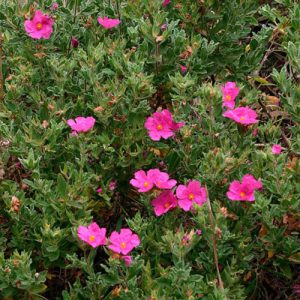
If you like the look of hibiscus flowers but want something more compatible with the Texas climate, the rock rose (Pavonia lasiopetala) is ideal. Its flowers have five petals that are usually red or pink. They also tend to draw hummingbirds to your garden.
The rock rose plant is a bit smaller than some other landscaping shrubs, as it can grow up to four feet tall. Its beauty makes it a popular landscaping plant, but it’s important to trim as needed: the rock rose is prone to weed-like growth!
American Beautyberry

American beautyberry plants (Callicarpa americana) make great additions to your garden if you’re trying to maintain some color year round. Their vivid purple berries appear after the leaves have fallen, so they can’t be missed! Their metallic sheen is especially noticeable against the bare wood of the branches.
Like many shrubs on the list, the American beautyberry is a plant that makes a positive environmental impact. Though these berries aren’t the first choice of food for birds and other animals, they are a very important survival food when other food sources run out. And if you wish, you can also use this shrub as your own food plant. The berries generally taste unpleasant when eaten raw, but they can be made into various types of wine and jelly!
Texas Mountain Laurel
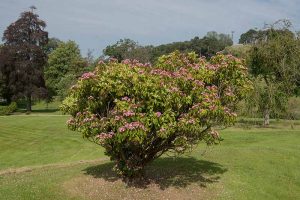
The Texas mountain laurel plant (Sophora secundiflora) is another great choice for those in search of a pop of purple. Its flowers form delicate, pale violet clusters that stand out against its glossy green leaves. If you’re looking to create a privacy hedge, this dense, multi-stemmed shrub is certainly up to the job. Or if you prefer, you can cultivate a single plant until it becomes the same size as a small tree.
Texas mountain laurel is also a good choice if you’re trying to effectively landscape an area with poor soil. This plant will thrive in rocky soil that other plants won’t tolerate. However, keep in mind that it tends to grow slowly in soil of any type.
Turk’s Cap
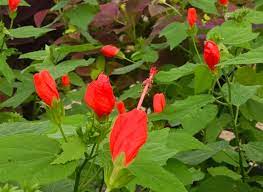
Since Texas isn’t a state particularly known for shade, many of the native shrubs on the list prefer full sun or at least partial sun. However, the vibrant Turk’s cap (Malvaviscus arboreus var. drummondii) will thrive in the shade. This plant is sometimes called the “sleeping hibiscus,” as its bright red flowers look a bit like a hibiscus flower that has folded itself shut. And if you wish, you can even use the fruits and flowers to make herbal tea!
The Turk’s cap is common enough in Texas that you can find it in most nurseries. And like many plants on the list, it is fairly low maintenance. But there is one important aspect of maintenance to keep in mind: though it is a perennial, it must be cut back to the ground in winter.
White Mistflower
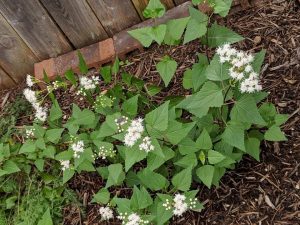
You might hear the white mistflower (Ageratina havanensis) called by a few other names, including “Havana snakeroot” and “shrubby boneset.” Its silky, mist-like white blooms appear in early Autumn. If you love butterflies, this is a great landscaping plant to choose. Its blooming season coincides with the migration of monarch butterflies, so it provides much-needed nectar.
While the flowers are seasonal, the shrub itself is evergreen, making it a great year-round garden plant. It also doesn’t grow overly big; typically, it will reach 2-6 feet high when fully grown. Its naturally rounded shape means you won’t need to do a lot of pruning.
The Best Texas Native Perennials for Landscaping
Indian Grass

Though flowering plants are some of the most popular garden plants, interesting-looking grasses are an excellent way to add some variety. Indian grass (Sorghastrum nutans) is one of the more common Great Plains prairie grasses. As you might expect from a native prairie plant, Indian grass needs full sun to grow properly.
Bunches of Indian grass can make a statement on either side of a driveway or at the ends of a garden. Between late summer and early fall, it grows sprays of “spikelets” with tiny yellow flowers. The grass itself can also grow quite tall; most bunches of Indian grass will grow to be 3-7 feet high!
Lemon Beebalm
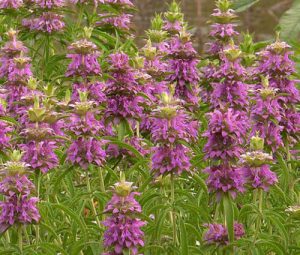
If you like sweet-smelling plants, lemon beebalm (Monarda citriodora) will be an excellent addition to your garden. If you crush the leaves or rub them between your fingers, you’ll smell a pleasant, mint-like scent.
Lemon beebalm is a plant that looks asnice as it smells. Its pretty flowers have delicate, papery petals and appear to be stacked on the stems. The flowers themselves are pinkish or purplish, and they’re sure to bring honeybees, butterflies, and hummingbirds to your lawn or garden! And even though it grows quickly, it usually won’t grow taller than about three feet.
Switchgrass
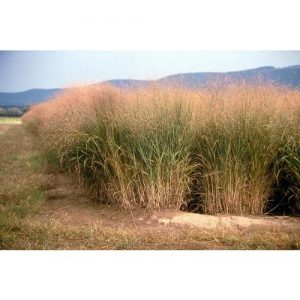
If you’re looking for a uniquely beautiful prairie grass for your landscaping project, switchgrass (Panicum virgatum) is a great option. This grass can both prevent erosion and improve overall soil quality, so including it may also improve the health of other plants.
Switchgrass has a beautiful bluish-green color that sets it apart from many landscaping grasses. But its seed head is especially lovely, too. Its many fine branches and overall purplish cast give it a misty cast. Switchgrass can certainly get tall, as it can reach over eight feet.
Wild Petunia
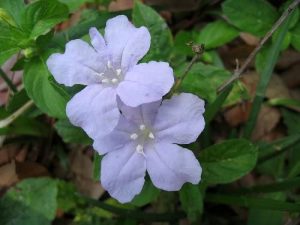
Many of the native plants on the list have at least some degree of height. But if you’re looking for a pretty groundcover, look no further than wild petunia (Ruellia nudiflora). Though it looks like one, this plant is not an actual petunia. But its delicate, pale purple flowers will certainly liven up your garden all spring and summer.
If you need a potted plant or two for a porch or overhang, the wild petunia works well. It’s small enough to do well as a container plant. It will usually do well even in somewhat dry soil, as it’s naturally found in relatively moist parts of the Sonoran Desert.
Yucca
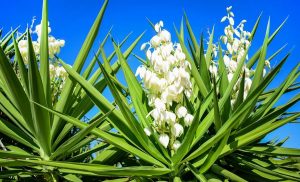
There are many species of plants in the Yucca genus. Many of them are very popular landscape plants in hot, dry areas. They have rosette-like shapes of sharp, pointed leaves, as well as a tall, central spray covered in flowers.
Some landscapers opt to capitalize on the dramatic nature of the yucca plant and place it alongside cordylines and phormiums, two other landscape plants with striking, pointed leaves. Even a couple of yucca plants will make a statement. But if you want, you can also use them to create a hedge or border.
Little Bluestem
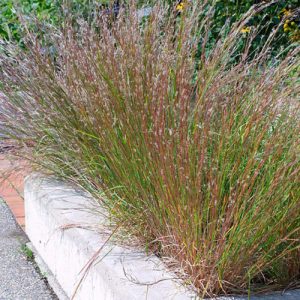
If you’re interested in landscape grasses but have found most species to be too tall, little blustem (Schizachyrium scoparium) is a great option. Even when it’s fully grown, it doesn’t reach more than 2.5-3 feet tall. When it blooms in summer, the seed heads at the tops of the blades grow fairly wide, making the plant look a bit like a broom.
There are plenty of effective ways to use little bluestem and similar grasses. You can plant them behind shorter plants to create a backdrop, or you can plant them along fencelines. Some landscapers also like to create small, prairie-like patches with little bluestem and several types of native flowers.
Black-Eyed Susan
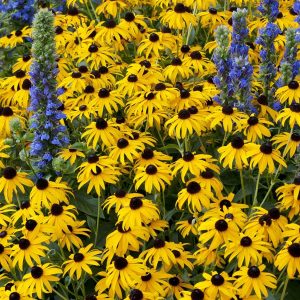
The black-eyed Susan (Rudbeckia hirta) may be the state flower of Maryland, but it’s also native to Texas. When the black-eyed Susan blooms, it creates a blanket of brilliantly bright flowers. These flowers are great for attracting butterflies, and they’re also an excellent choice if you prefer including wildflowers in your garden.
Like many wildflowers, the black-eyed Susan doesn’t need much maintenance at all. All you need to do is remove dead flowers so new ones can grow back quickly.
Crossvine
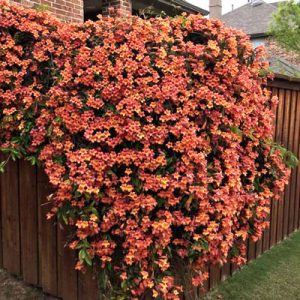
The right choice of vine can really bring a landscape together. And crossvine (Bignonia capreolata) is an excellent choice. Its flowers are star-shaped and usually reddish, yellow, and/or orange. However, there are many cultivated varieties made specifically for landscaping. Its leaves are unique and beautiful too: in winter, they are so dark green that they appear nearly purple.
This climbing vine is the perfect choice for trellises or garden walls. It can climb up to 50 feet, so if you only want it to cover a small portion of your garden, be sure to regularly trim it!
Dwarf Palmetto
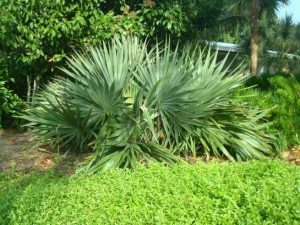
The dwarf palmetto (Sabal minor) is a small palm perfect for use in landscaping. Much like the yucca plant, it can add a lot of visual interest to a landscape with its crown of pointed leaves.
This small plant can thrive in a range of different habitat types, and it’s remarkably cold-hardy for a palm. It will do well in both shade and full sun, so it’s a great choice if you want a striking ornamental plant that’s still low-maintenance.
Prickly Pear
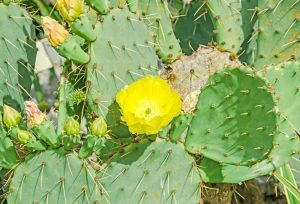
The term “prickly pear” refers to any of the cacti in the Opuntia genus. Its relatively flat, spiny “pads” create some real visual interest in any landscape, especially in desert or desert-like climates. Depending on the exact species you choose, prickly pear cacti can grow upright or expand to the side.
These cacti also will add a burst of color when they loom. Many of them will grow a single flower at the top of each pad. The flowers come in many different colors, but many of them are pink, yellow, or purple. Even the color of the pads varies somewhat between species: some are more blue-green than green.

